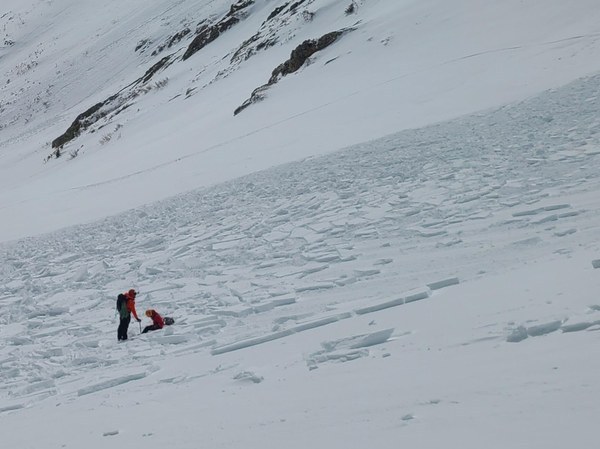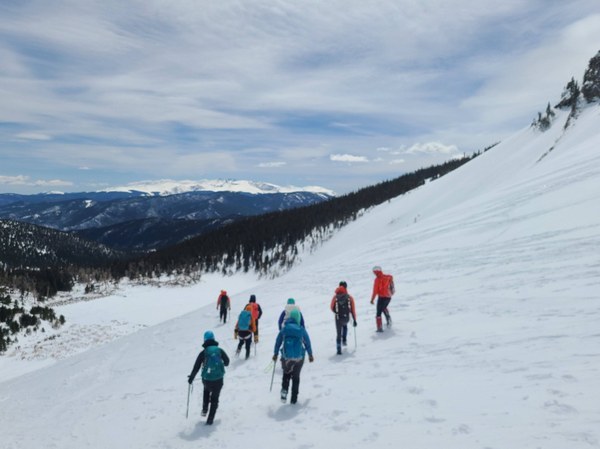The Sobering Reality of Colorado's Avalanche Risk
The statistics paint a stark picture of the dangers facing Colorado's mountain community. Over the past decade, Colorado has experienced 50 fatal avalanches resulting in 58 deaths, with the 2020-2021 season being particularly devastating with 9 avalanches causing 12 fatalities. The Colorado Avalanche Information Center (CAIC) reports that over the last 10 winters, an average of 27 people died in avalanches each winter across the United States, with Colorado consistently ranking among the states with the highest number of avalanche fatalities.
These aren't just numbers—they represent members of our outdoor community, experienced and novice alike, who ventured into the mountains without adequate knowledge or preparation. What makes these statistics particularly sobering is that many avalanche accidents are preventable through proper education, preparation, and decision-making.
Learning from Close Calls: The St. Mary's Glacier Incident
Even experienced groups with proper training and equipment can find themselves in dangerous situations, as demonstrated by a recent incident at St. Mary's Glacier during a Colorado Mountain Club Alpine Climbing School field day. On April 6, 2025, what appeared to be low-angle, low-consequence terrain produced a shallow wind slab avalanche that caught two individuals—an instructor and a student.
Fortunately, both individuals walked away uninjured, but the incident serves as a powerful reminder of the subtle and sometimes unexpected nature of avalanche risk. The group had conducted proper pre-trip planning, reviewed CAIC forecasts, postponed the trip due to conditions, carried proper safety equipment, and included experienced participants with AIARE training. Despite all these precautions, the avalanche still occurred in terrain that had been used for years without incident.
As AIARE instructor Ken Yaphe noted about the incident, "the alpine environment has inherent risks. Some very subtle." This underscores why comprehensive avalanche education is essential—it's not just about learning to identify obvious dangers, but developing the skills to recognize and respond to subtle risk factors that can be easily overlooked.

The Colorado Mountain Club's Commitment to Avalanche Safety
At the Colorado Mountain Club, we understand that avalanche education is not an optional add-on to mountain training—it's a fundamental life skill. That's why we've integrated comprehensive avalanche safety into our educational offerings and made it accessible to our entire community.
Friends of CAIC Membership: Supporting Critical Infrastructure
Every participant in our Avalanche Education Classes receives a membership to Friends of CAIC (Colorado Avalanche Information Center). This partnership reflects our commitment to supporting the critical infrastructure that keeps Colorado's backcountry community safe. CAIC provides daily avalanche forecasts, maintains avalanche accident databases, and conducts essential research that informs best practices in avalanche safety.
By including Friends of CAIC membership with our classes, we're not just providing additional value to our participants—we're ensuring they become part of a community that actively supports avalanche safety research and education. This membership provides access to enhanced forecasting resources, educational materials, and supports the ongoing work that makes Colorado's avalanche information among the best in the world.

Expanding Our Educational Offerings: Alpine-Specific Training
Recognizing that different mountain activities present unique avalanche risks, we're excited to announce the introduction of an alpine-specific Avalanche Education Class in 2026, led by renowned instructor Karin Pocock. This specialized course will address the particular challenges faced by mountaineers, ice climbers, and alpine enthusiasts who encounter avalanche terrain as part of their broader mountain objectives.
Karin Pocock brings exceptional credentials to this new offering. As a certified AIARE instructor and experienced mountaineer, she understands the unique decision-making challenges that alpine climbers face when avalanche terrain intersects with technical climbing objectives. Her expertise will help participants develop the specialized skills needed to assess and manage avalanche risk in the complex terrain that defines Colorado's high alpine environment.

Why Avalanche Education Saves Lives
Avalanche education is fundamentally about developing three critical competencies: knowledge, skills, and judgment. Each element is essential, and weakness in any area can lead to tragic consequences.
Knowledge: Understanding the Science
Effective avalanche education begins with understanding snow science—how different snow layers form, bond, and fail under various conditions. Students learn to read weather patterns, understand how wind, temperature, and precipitation affect snowpack stability, and interpret avalanche forecasts provided by professionals at CAIC.
This knowledge extends beyond the technical to include understanding human factors in avalanche accidents. Research consistently shows that many avalanche fatalities involve experienced recreationists who had the knowledge to make better decisions but were influenced by factors like group dynamics, time pressure, or "powder fever."
Skills: Practical Application
Knowledge without practical skills is insufficient in avalanche terrain. Our education programs emphasize hands-on learning: using avalanche safety equipment (beacons, probes, and shovels), conducting snow stability tests, and practicing rescue scenarios. Participants learn to dig snow pits, interpret their findings, and make go/no-go decisions based on field observations.
These skills must be practiced regularly—a beacon buried in a pack is useless if the carrier doesn't know how to conduct an efficient search when seconds count in a rescue scenario.
Judgment: Making Critical Decisions
Perhaps the most challenging aspect of avalanche education is developing sound judgment. This involves synthesizing technical knowledge, field observations, and situational awareness to make appropriate decisions about terrain choice and risk management.
The St. Mary's Glacier incident exemplifies why this is so challenging—experienced participants with proper equipment and training still encountered an unexpected avalanche. Good judgment involves not just recognizing obvious danger signs, but maintaining awareness that subtle risks can exist even in familiar terrain.
The Broader Impact of Education
Avalanche education creates a positive feedback loop that benefits the entire mountain community. Educated recreationists make better decisions, reducing the burden on search and rescue teams. They contribute valuable observations to avalanche centers, improving forecasting for everyone. Perhaps most importantly, they model safe practices that influence others in the backcountry.
When CMC participants complete avalanche education and become Friends of CAIC members, they join a network of informed mountain users who actively contribute to community safety. They're more likely to check forecasts, carry proper equipment, share conditions information, and make conservative decisions when conditions warrant.
Looking Forward: Building a Safer Mountain Community
The introduction of our alpine-specific avalanche course with Karin Pocock in 2026 represents our ongoing commitment to evolving our educational offerings to meet the specific needs of our community. As mountain recreation continues to grow and diversify, our education programs must adapt to address new challenges and user groups.
We also recognize that avalanche education is not a one-time event but an ongoing process. Conditions change, new research emerges, and skills deteriorate without practice. That's why we encourage participants to view their initial avalanche education as the beginning of a lifelong learning journey.
Making the Investment
The cost of avalanche education is minimal compared to the value it provides. When you consider that our courses include Friends of CAIC membership—supporting the critical infrastructure that keeps our entire community safer—the investment becomes even more meaningful.
But the true value of avalanche education cannot be measured in dollars. It's measured in the accidents that don't happen, the rescues that aren't needed, and the lives that continue to be lived fully because someone made the decision to learn.
Conclusion: Education as Community Responsibility
Every person who ventures into avalanche terrain has a responsibility—to themselves, their partners, and the broader mountain community—to obtain proper education. The mountains will always carry inherent risks, but we can significantly reduce those risks through preparation, knowledge, and sound decision-making.
The Colorado Mountain Club's comprehensive approach to avalanche education, including our partnership with Friends of CAIC and our upcoming alpine-specific course, reflects our commitment to building a safer, more informed mountain community. We invite you to join us in this critical mission.
Whether you're a beginner taking your first steps into the backcountry or an experienced mountaineer looking to refine your skills, avalanche education is an investment in your safety and the safety of others. In Colorado's avalanche terrain, education isn't just recommended—it's essential.
The mountains offer incredible experiences and lifelong memories, but they demand respect and preparation. Make sure you're equipped with the knowledge and skills to safely enjoy everything Colorado's backcountry has to offer. Your life—and the lives of those who recreate alongside you—may depend on it.
 Graham Ottley
Graham Ottley

Add a comment
Log in to add comments.